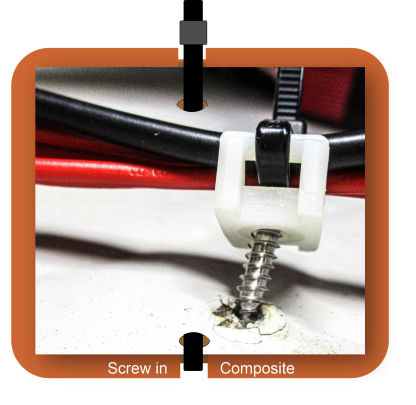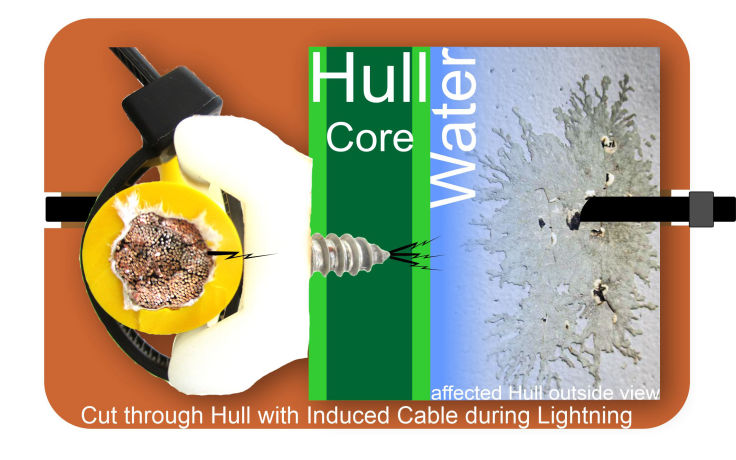
Screws in Composites
Every surface on a boat will always be humid, not only because of waves splashing into it, but also due to the hydrostatic (water attracting) behavior of salt water in combination with condensation. Metal screws are particularly affected because different temperature levels between the hull and the inside air of the boat will make them “sweat”.
Whether it’s a puddle, or little droplets that merge into a large drop, water will penetrate into cores due to its osmotic capabilities, even if it’s only a small hairline crack.

Delamination of Composites
Years ago deck or bulkhead cores were made of plywood or balsa wood, and boat riggers avoided drilling into them because they would rot with water penetration. Nowadays, some professional boat builders drill screws to fix cable mounts into modern, composite hulls made of polyurethane foam and layers of fiberglass, ignoring the fact that those materials might also be sensitive to water penetration.
Now, professional boat surveyors have proved that the water that penetrates the cores can induce a chemical reaction of the plastic resins and bonding agents. The precipitated styrene will soften the foam and, as a result, delamination may take place.

In Contact with the Hull
Another approach to laying electrical wires is to place cables directly onto the hull or bulkhead, using plastic fasteners which are bonded to the surface with an adhesive pad.
This idea seems to be better for the cores, but the electrical wires touching the hull carry the risk of grounding an electromagnetic surge during high current discharges, like lightning.

Path of least Resistance
Lightning cells induce surge currents to all conductive materials (cables, rigging, etc.) during a lightning strike through electromagnetic induction. The electrons are searching the path of least resistance to the positive charged water, whether it is salty or not. Cables which are in direct contact with the hull are only a short distance away from the water. Wires may also be covered with humid, salty particles that build a bridge for the current to electrical ground (water).

Hull Perforation
When metal screws are used for fixing cable mounts, they act as micro lightning rods in reverse that will help conduct the surge through the first bit of the hull. An arc will build up which results in an explosion of the outer hull. The results are perforations of the outer fiberglass layer of the composite hull.
